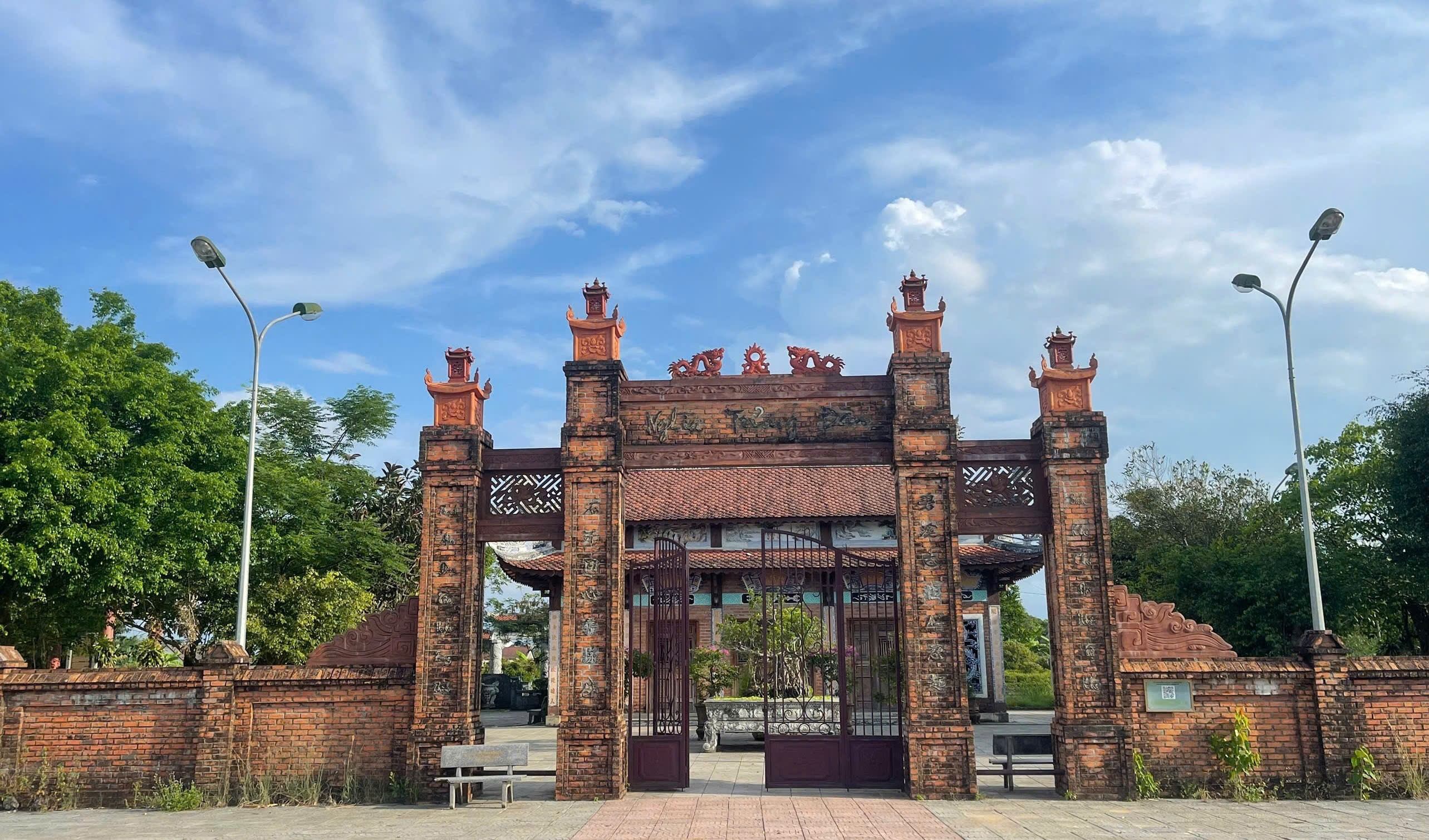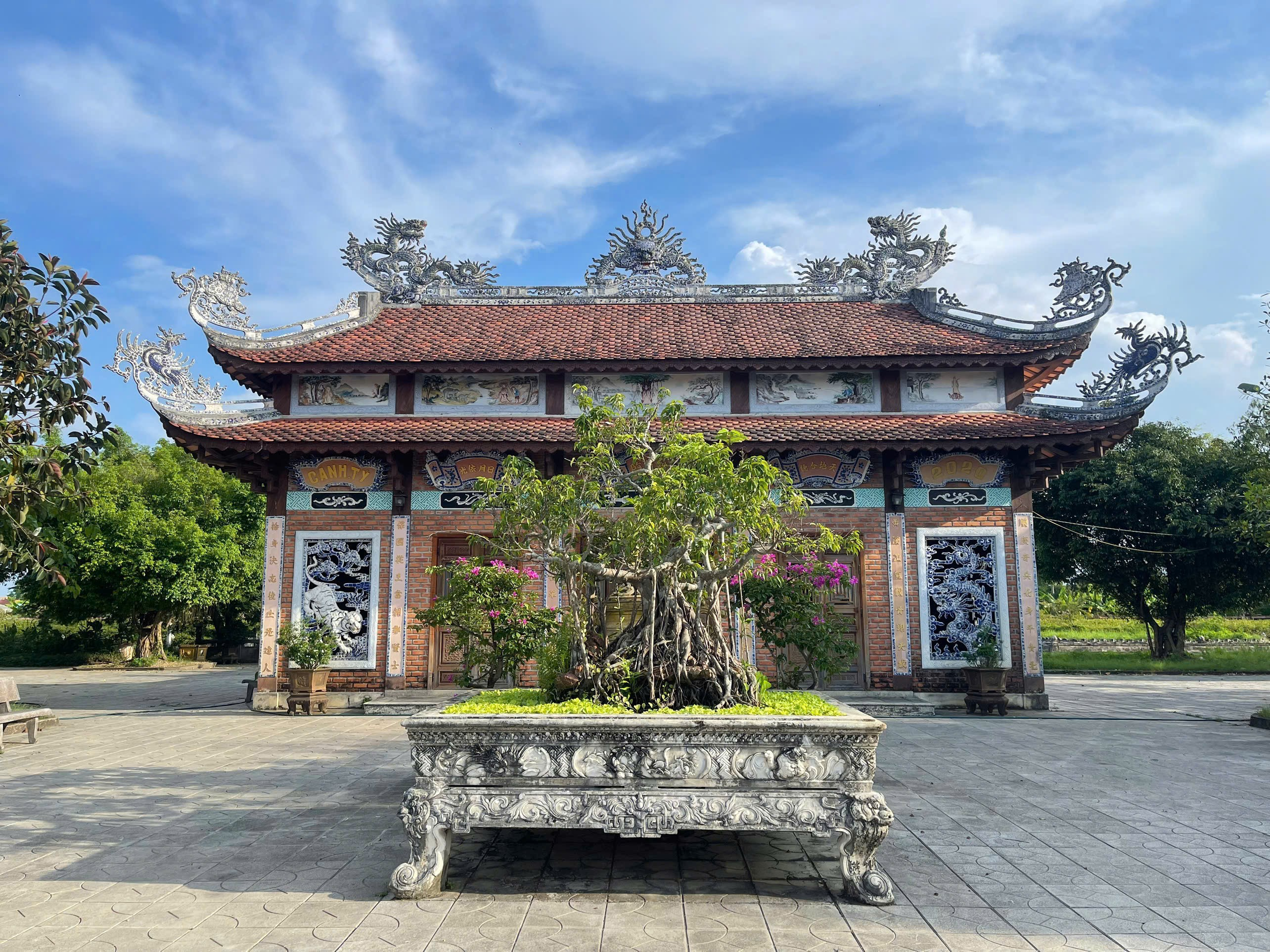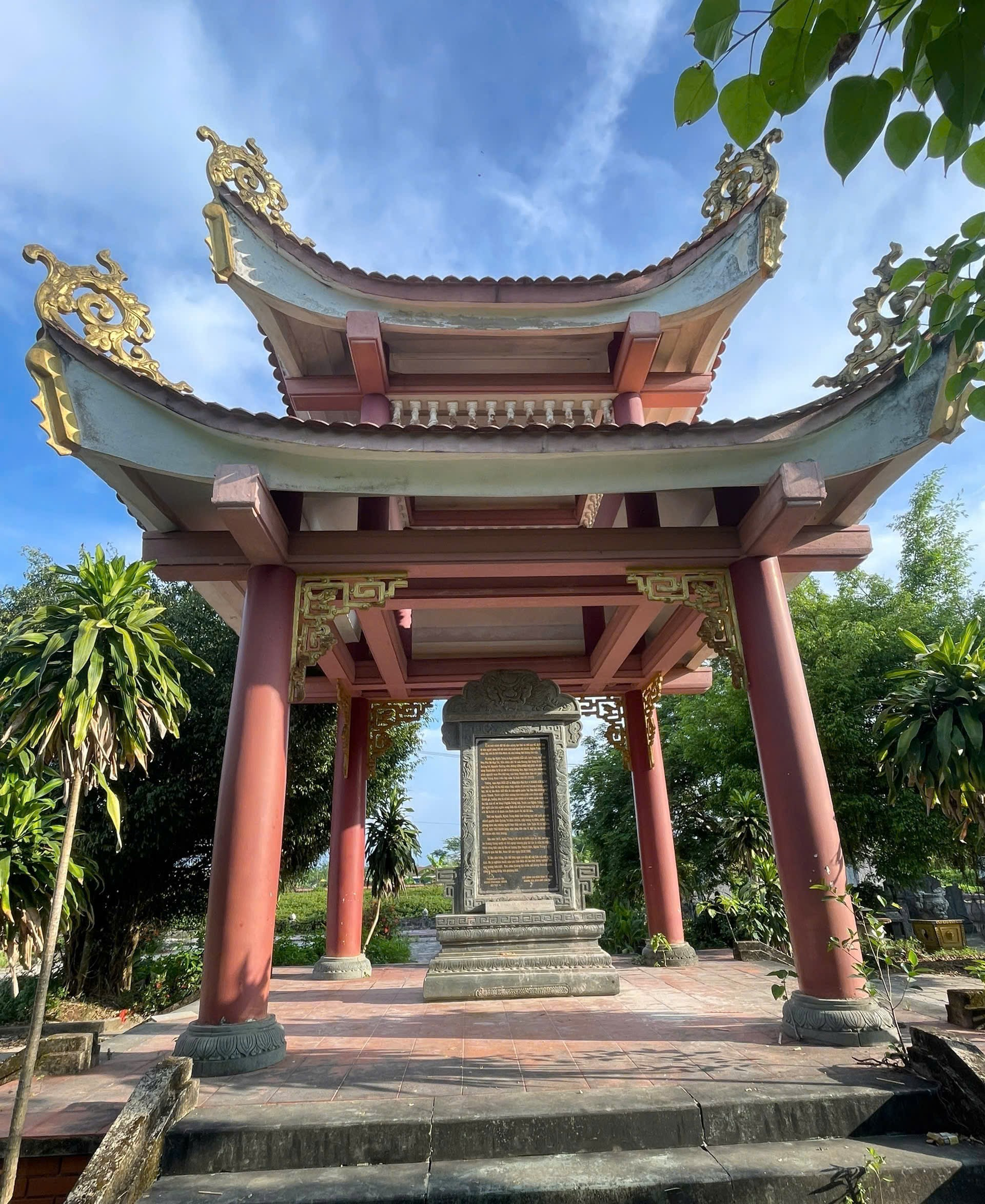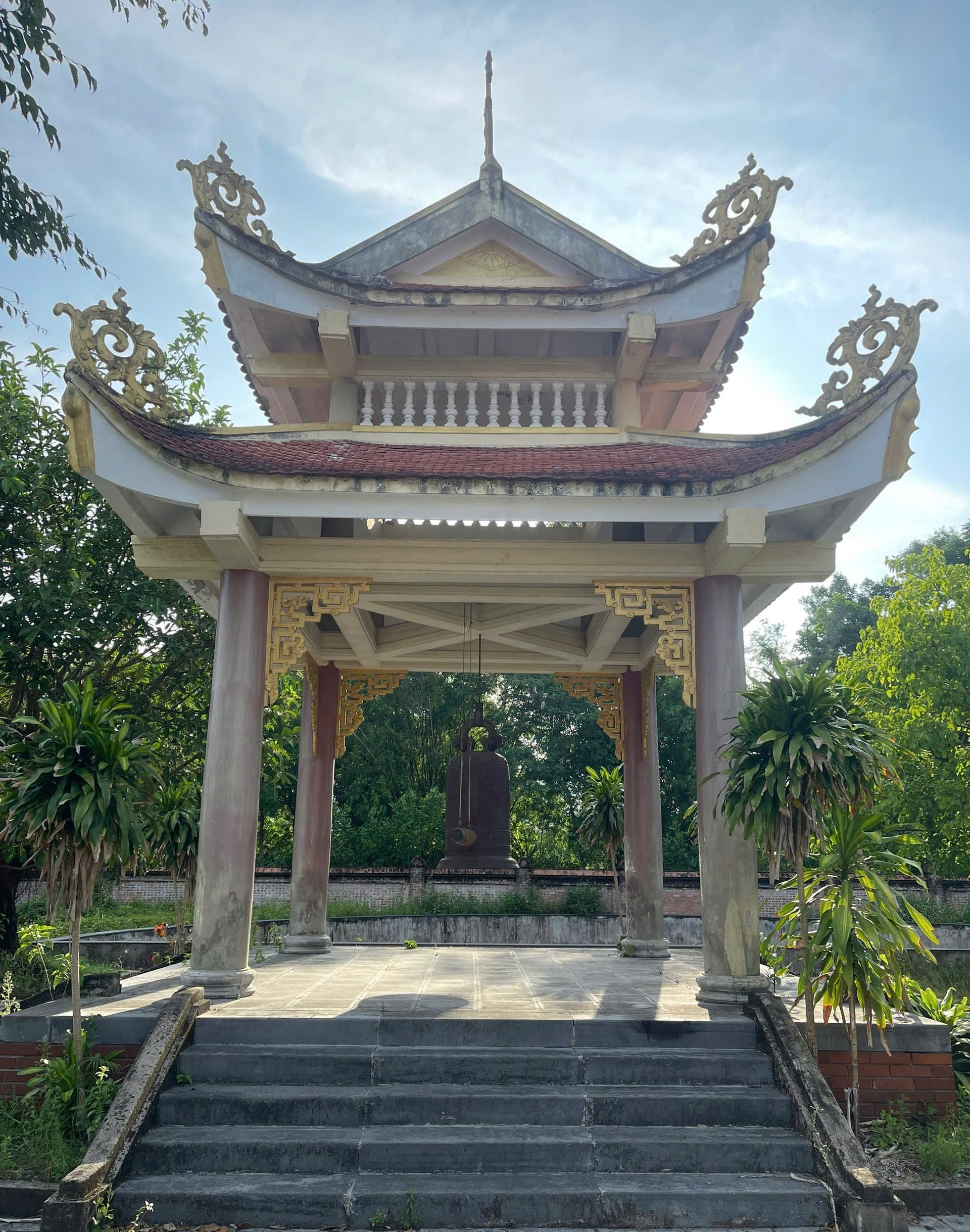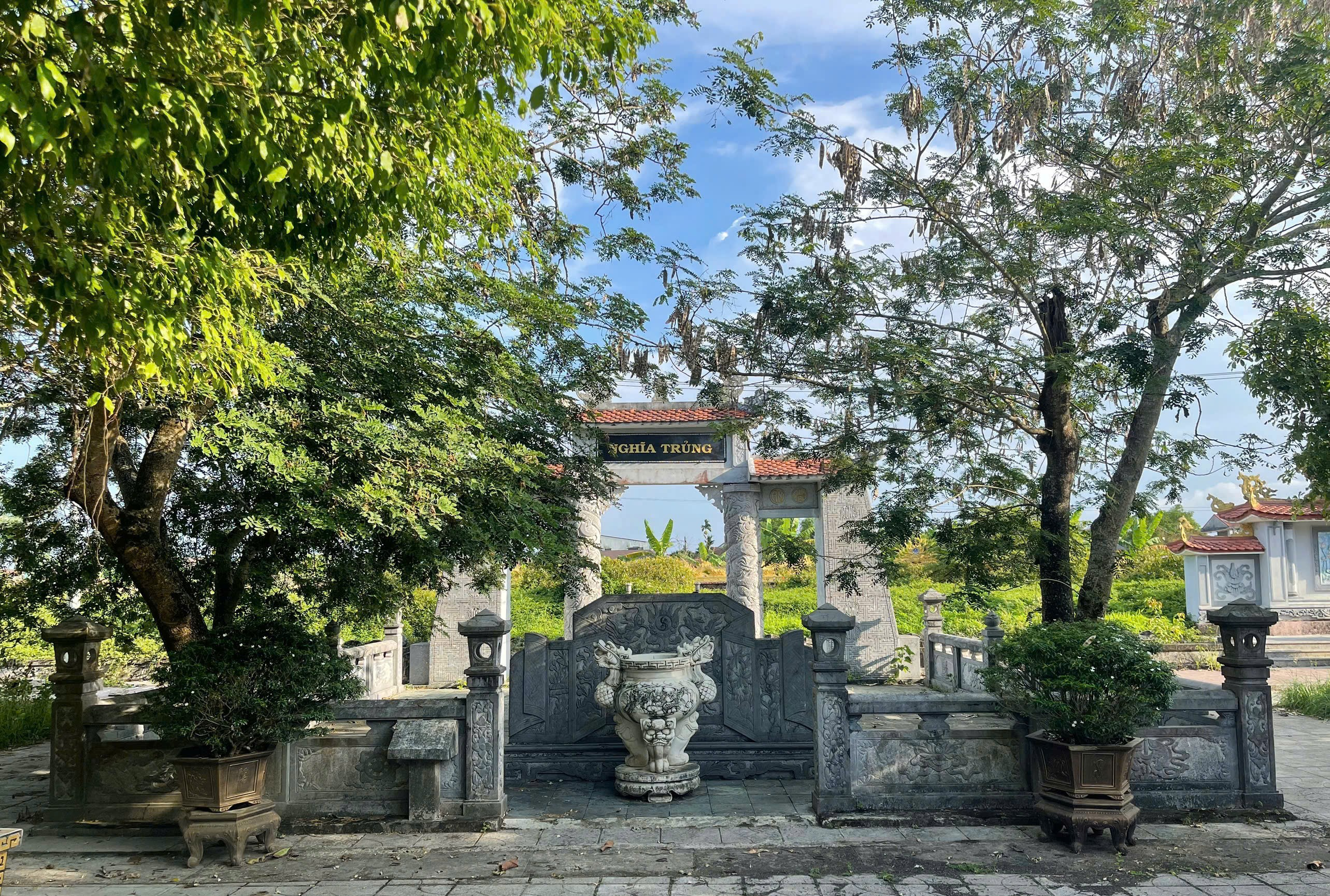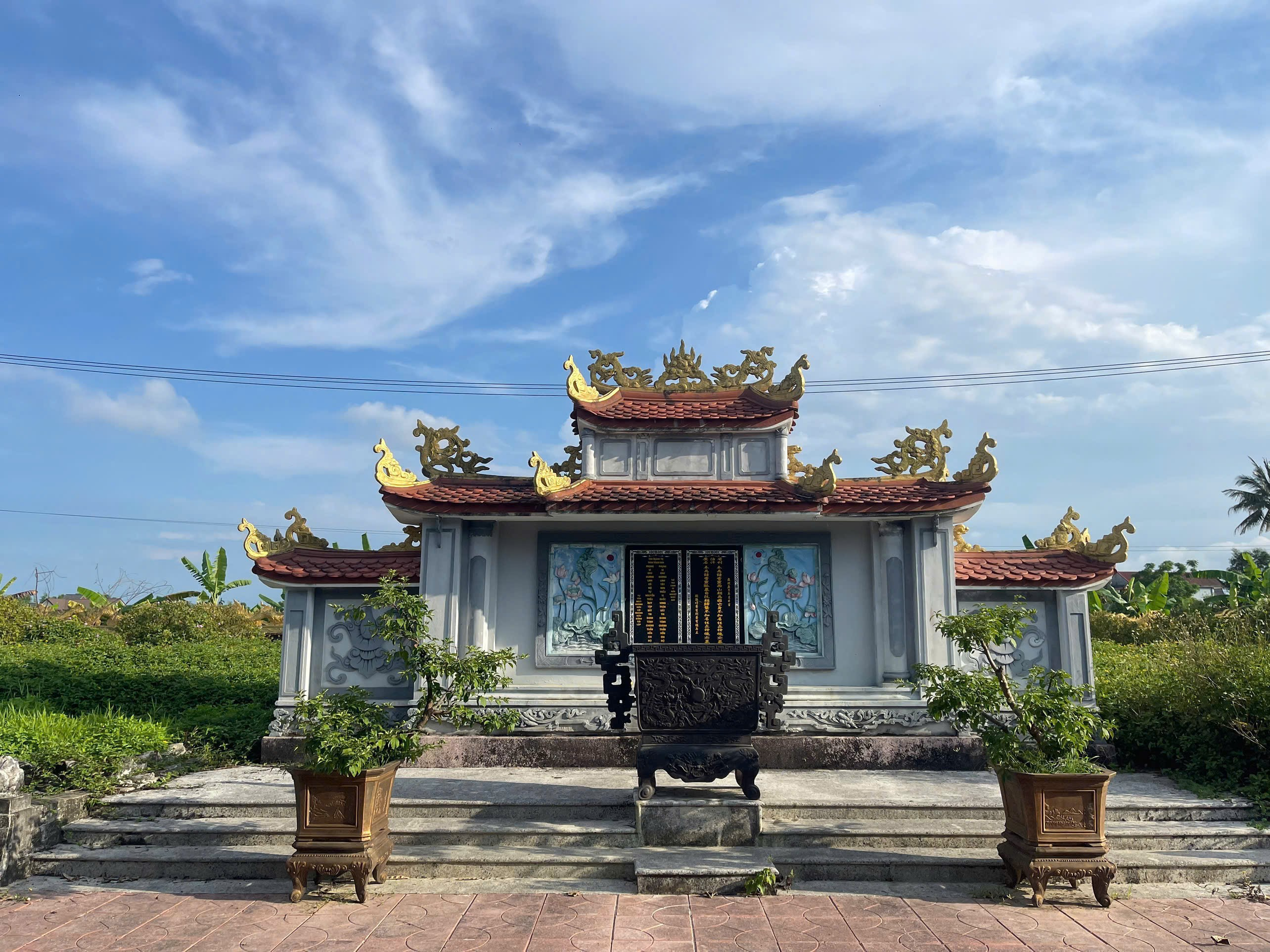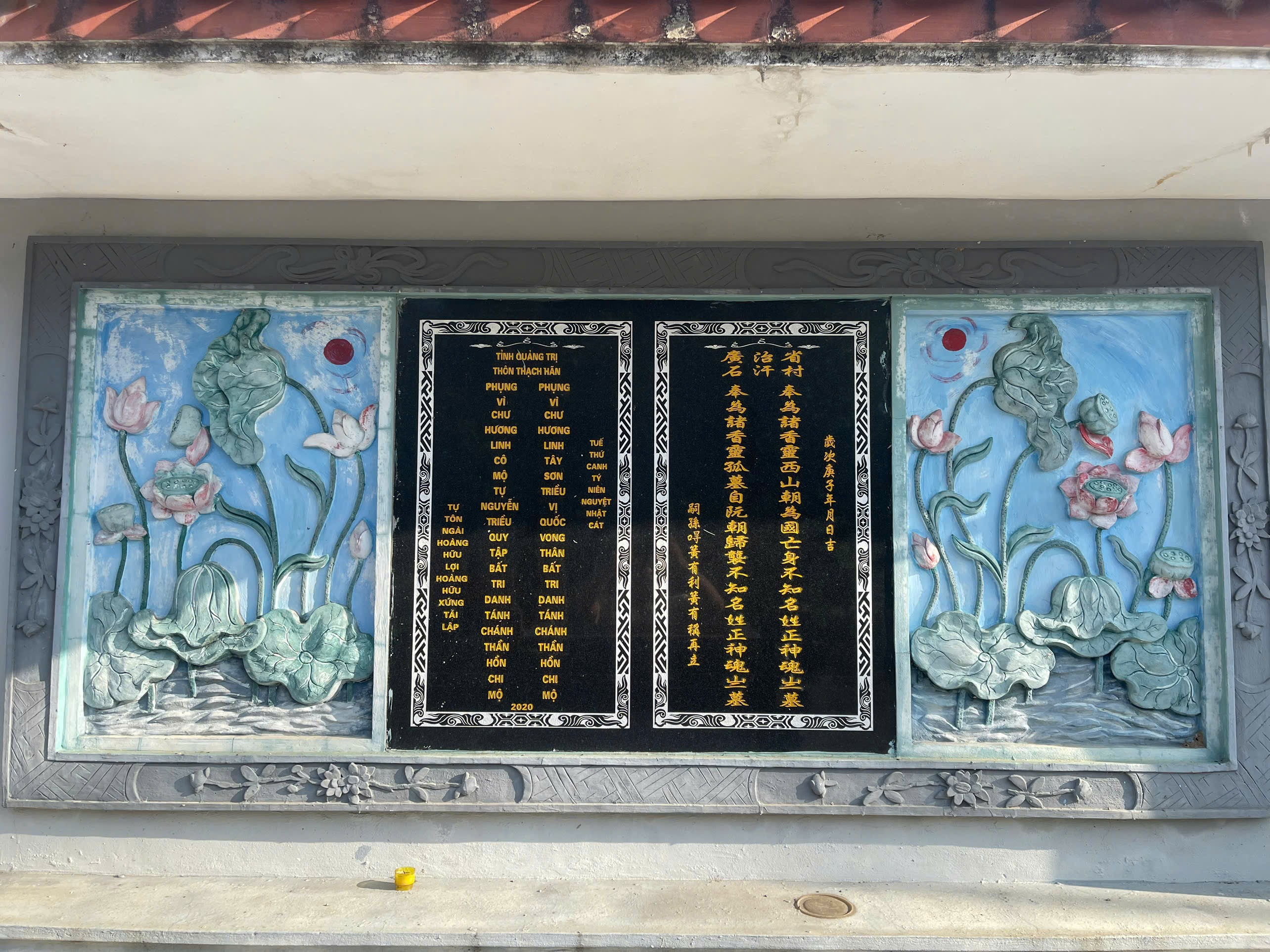When speaking of Quảng Trị—a land steeped in the heroic pages of Vietnam’s history—people often recall the dozens of martyrs' cemeteries scattered throughout the province, where nearly 61,000 graves of fallen heroes rest, who gave their lives for national independence and freedom.
Yet, there exists a lesser-known but profoundly meaningful site—Nghĩa Trủng Đàn, believed to be the first martyrs' cemetery in Vietnam, dating back to the 19th century. This solemn ground is not only a historical landmark but also the origin of Vietnam’s sacred tradition of honoring those who sacrificed for the nation.
The Tam Quan Gate of Nghĩa Trủng Đàn (Photo: Hồng Ngọc)
Nestled quietly on a 3,000-square-meter plot in Quarter 8, Ward 3, Quảng Trị Town, Nghĩa Trủng Đàn rests peacefully among lush rice fields and the gentle flow of the poetic Thạch Hãn River. Few would expect that this tranquil place holds so many touching stories of human compassion and silent sacrifices for the nation.
In 1872, during the reign of Emperor Tự Đức, an upright mandarin from Bích Khê Village—Trung Nghị Đại Phu Hoàng Hữu Lợi—used his personal savings to purchase over 7 sào of land in Thạch Hãn Village to establish a burial ground for unclaimed graves of southern migrants who perished during the southward expansion. With deep benevolence and a spirit of “planting the tree of virtue for future generations,” he created a humanitarian resting place where lost souls could gather and be remembered with warmth and reverence.
This cemetery gained greater historical significance when his son, Hiệp Biện Đại Học Sĩ Hoàng Hữu Xứng, carried on his father’s noble mission. While serving as Governor of Hanoi, he discovered many unmarked graves believed to be the remains of Tây Sơn warriors, who had followed Emperor Quang Trung in the famous 1789 campaign against the Qing invaders.
After verifying their origins, he had over 600 sets of remains carefully exhumed and transported across a thousand kilometers back to Quảng Trị for reburial at Nghĩa Trủng Đàn—the very site his father had founded. Since then, the cemetery has become a sacred resting ground for two noble souls: unknown migrants who died far from home and the heroic Tây Sơn soldiers who gave their lives for the nation.
View of the Main Ancestral House at Nghĩa Trủng Đàn (Photo: Hồng Ngọc)
Within the serene grounds of Nghĩa Trủng Đàn, visitors will encounter a stone stele inscribed by writer Hoàng Phủ Ngọc Tường, a descendant of the Hoàng family, affirming this as the very first war martyrs’ cemetery in Vietnam. The site also preserves a large bronze bell engraved with the words “Nghĩa Trủng Đàn.” Each time the bell rings during ceremonial offerings, it echoes like a voice from the past—a solemn tribute to the countless heroic souls laid to rest here.
The stone stele at Nghĩa Trủng Đàn, inscribed by renowned writer Hoàng Phủ Ngọc Tường (Photo: Hồng Ngọc)
Especially noteworthy is that since the reign of Emperor Thành Thái, the imperial court officially recognized Nghĩa Trủng Đàn as a national institution, granting farmland and tax exemptions to ensure the continuous care and ceremonial offerings at the site. Each year, on the 15th day of the seventh lunar month and the 25th day of the twelfth lunar month, local residents and descendants of the Hoàng family gather to hold solemn memorial rites. These ceremonies are not only cultural traditions of deep humanity, but also vital threads preserving the moral lineage and ancestral gratitude that lie at the heart of Vietnamese values.
The great bell inscribed with the words “Nghĩa Trủng Đàn” (Photo: Hồng Ngọc)
Through the ravages of war and time, Nghĩa Trủng Đàn suffered severe destruction—especially during the fiery summer of 1972, the historic 81-day battle to defend the ancient citadel of Quảng Trị. Yet, in a miraculous testament to resilience, the original stone bearing the inscription “Nghĩa Trủng Xứ” remained perfectly intact—standing today as a powerful symbol of Vietnamese history and spiritual endurance.
In recognition of its historical, cultural, and scientific significance, the Quảng Trị Provincial People's Committee classified Nghĩa Trủng Đàn as a provincial heritage site in 2010. In recent years, thanks to contributions from the Hoàng family descendants and supporters from both Vietnam and abroad, the site has been expanded by an additional two hectares, with new constructions including a memorial house, tombs, commemorative steles, a three-entrance ceremonial gate, and protective stone walls.
With its serene, green surroundings and dignified architecture, Nghĩa Trủng Đàn has been revitalized into a unique cultural and spiritual tourism destination in Quảng Trị—offering both solemn reflection and a deep connection to the ancestral soul of Vietnam.
The ancestral tombs within the grounds of Nghĩa Trủng Đàn (Photo: Hồng Ngọc)
More than just a cemetery, Nghĩa Trủng Đàn stands as a living symbol of patriotism, gratitude, and national righteousness. Amidst the land of Quảng Trị, once engulfed in the smoke and fire of war, this sacred place now radiates human compassion and historical reverence—quietly inviting travelers to pause, reflect, and honor the silent stories of ancestors who safeguarded the soul of the homeland.
If your journey leads you to Central Vietnam, do not miss Nghĩa Trủng Đàn—a place “where the past still breathes” through layers of earth, silent mounds of graves, and the echo of ancient bells resounding beneath the peaceful sky of Quảng Trị.
Some images from within the sacred grounds of Nghĩa Trủng Đàn (Photo: Hồng Ngọc)
